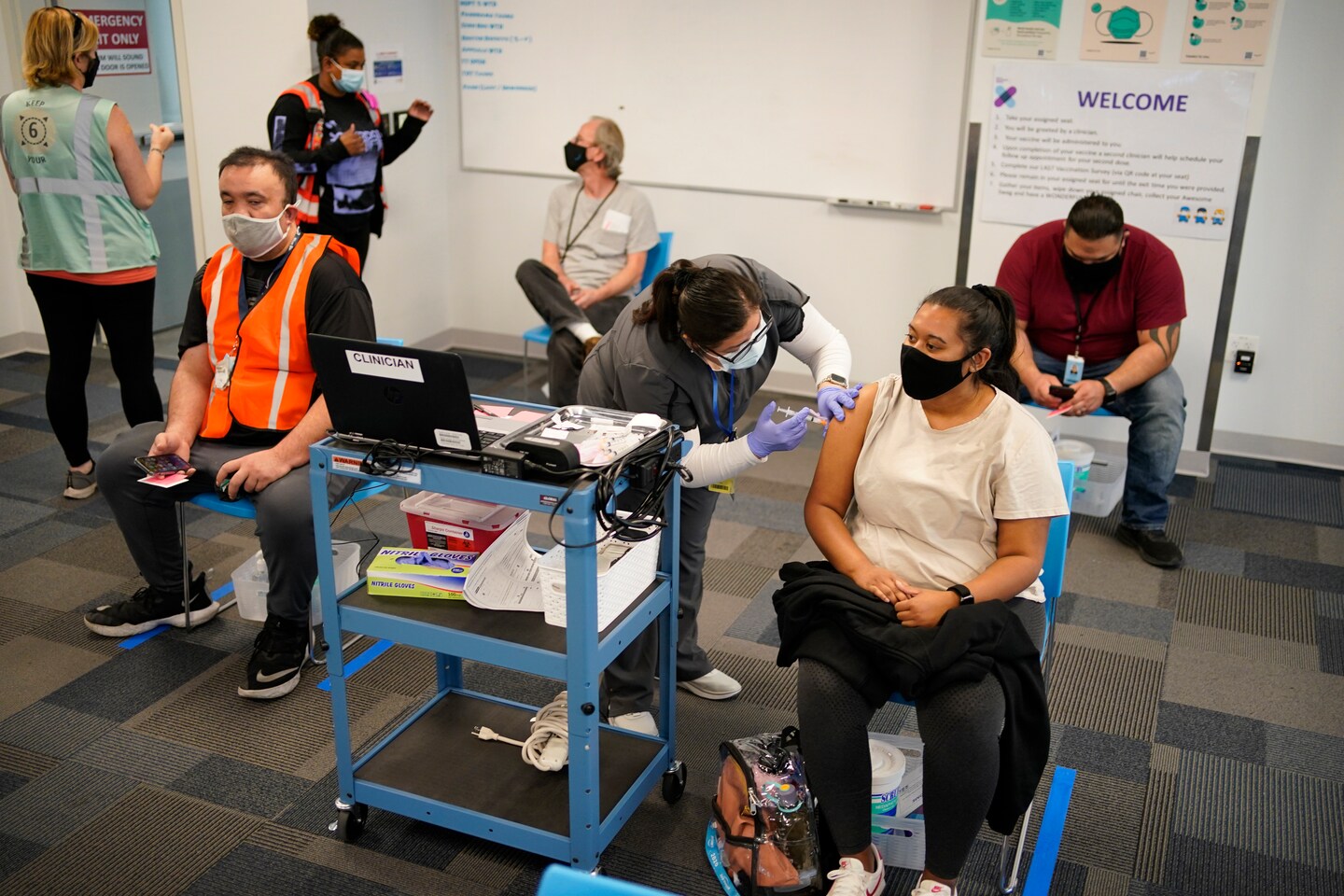[ad_1]
Radio Advisory’s Rachel Woods sat down with Advisory Board’s Darby Sullivan and Rachel Zuckerman to discuss the five root causes of behavioral health inequity.
U.S. health care has made some strides in making behavioral health treatment more accessible by pouring more money into services like tele-behavioral health. So why are we still seeing significant increases in mental health conditions and drug overdose deaths? Are we putting our money in the right places?
Radio Advisory’s Rachel Woods sat down with Advisory Board‘s Darby Sullivan and Rachel Zuckerman to discuss the five root causes of behavioral health inequity.
Read a lightly edited excerpt from the interview below and download the episode for the full conversation.
Rachel Woods: So if we’re going to solve this problem, I think we need to do a deeper dive in how the behavioral health problem actually manifests—the root causes. And if I think about where our audience probably is, they’re probably all at the starting point of thinking about stigma, something that has definitely gotten better over the last couple of years, at least in part. But I’m guessing that both of you are going to tell me that solving for stigma alone isn’t going to solve the equity problem. What are some of the bigger underlying challenges that we need to address as an industry?
Darby Sullivan: Well, I’m glad you brought that up, Rae. And actually I would push back a little bit on our assumption that stigma has gotten better.
Woods: What do you mean?
Sullivan: As you were alluding to maybe a little bit, stigma is not the same for this high income yuppy that might talk about going to therapy once a week, compared to someone who’s living on the streets and has unmanaged schizophrenia. The stigma is different. That gets exactly at that intra inequity that we were just talking about. So while we can acknowledge that maybe as a culture, we talk about depression more, we talk about anxiety more, that doesn’t mean we’ve overcome the barrier of stigma by any means.
The other piece of stigma that I think a lot of people don’t talk about, but it’s equally as important, is stigma against the profession itself. So a lot of folks that are, you know, potential practitioners or clinicians pretty rightly look at behavioral health as a field and say, “Hey, do I want to get into this? Because it’s low paid, it’s very stressful work, there are so many barriers to actually getting my patient help, which has a whole host of ripple effects.”
Woods: So we haven’t actually even solved for the stigma problem, but what are some of the other root cause challenges that the industry would need to maybe not even solve, but at least advance in order to improve equity in the behavioral health space?
Rachel Zuckerman: I want to be really clear when we talk about the root causes of behavioral health inequities. The fundamental root causes are really the same as any other health inequity. So it’s structural racism, economic injustice. And then in behavioral health, there’s this additional layer that we talked about of kind of the deprioritization of behavioral health. So those are the big historical root causes, but we see them manifest today in five big ways that continue to drive these behavioral health inequities.
Woods: What are those five?
Zuckerman: So we already talked about stigma, which is one. The second is the lack of strong evidence for which behavioral health treatments work in which scenarios. Third, the fact that our current system doesn’t effectively address the social determinants of health needs that increase behavioral health challenges. Fourth, we don’t have enough behavioral health clinicians, and then fifth low reimbursement rates that contribute to all of these challenges.
Woods: Okay, so five root causes is a lot, but let’s attempt to kind of go through each of these in turn. Like you said, we’ve already talked about stigma. Now let’s get to evidence. Help me understand what the problem is here.
Sullivan: So the problem for clinical evidence and behavioral health is not that there’s no research or no evidence whatsoever for what worked, but we just, as a sort of scientific community, don’t quite understand why one treatment would work for our particular patient and it doesn’t work for another.
But it’s even more heightened for behavioral health conditions that just have less research writ large attached to them. So what that means is for a patient, they might have to go through multiple rounds of trying different medications with different side effects, combining them to find the right regimen that works for them. And it just takes a long time. So one of the things that we’re watching in this space is actually just new innovation in the types of therapeutics we’re using to treat these conditions, like psychedelic assisted therapy and deep brain stimulation with the goal of, can we sort of unlock something we haven’t found before for some of these more intractable diagnosis?
Woods: The next one you talked about is the social determinants of health. How does SDOH uniquely contribute to behavioral health needs?
Zuckerman: So in behavioral health, if you don’t have access to things like healthy food, safe housing, stable employment, we know that you’re more likely to develop mental health needs, and it’s a vicious cycle. So if you have a high acuity behavioral health need, that might affect your ability to find stable employment or go to the grocery store, or even go to your doctor’s appointments. So it’s particularly impactful in heightening behavioral health needs.
The other thing that’s really prevalent in the behavioral health space is social isolation and kind of a lack of agency. So that’s another compounding social determinant of health. Historically, as the health equity team, when we’ve talked about the social determinants of health in the past, we know that those don’t tend to be core competencies or strengths of traditional health care providers, so we’re really paying attention to partnerships where more traditional health care stakeholders are partnering with and seeing the value in other organizations that have expertise in addressing some of these other needs that are really crucial to behavioral health care.
Woods: We’ve talked about stigma, we’ve talked about evidence, and we’ve talked about the social determinants of health. Your last two root causes, I think are going to be the ones that our audience is the most familiar with when it comes to behavioral health specifically, starting with the fact that we just don’t have enough clinicians to actually meet demand for behavioral health services. And I am assuming that you are going to tell me that is something that has gotten worse and not better amidst the pandemic and everything else that we are living through.
Zuckerman: You are definitely right, Rae, and probably a lot of people have experienced this personally, just trying to find a therapist for themselves or a family member. It’s really hard right now. And I think the problem is a lot more nuanced than people even realize, because when we see folks talking about clinician supply, they’re usually talking about raw numbers. And it’s very well documented that there is a shortage of psychiatrists in the U.S., just to take one example of a type of provider.
But even if a clinician exists in your area, you also have to take into account, are they accepting new patients? Do they take the patient’s insurance? If they don’t, do they offer a rate that the patient can afford? Do they have the right expertise for that particular condition? And you also have to think about the relationship. Is it a good fit between the patient and provider?
Sullivan: And the other piece of this is, when we think about that second level of inequity, what are the ways in which our workforce can actually deliver culturally sensitive or culturally responsive care to every single patient? Because we know our workforce is not diverse enough to represent all of the communities that we serve. In combination with everything else Rachel said, this makes sense why the supply challenge is a lot more complicated and worse than you might first realize.
Zuckerman: And I think it’s not just that the supply is worse than we expect. It also contributes to the disparities in access that we’ve been talking about. Because if you’re a person that can’t afford to take off work to get the first appointment that’s available, or you can’t afford to pay out of pocket, or you have a higher acuity need, that’s all going to make it harder to find care.
Woods: The last big one is reimbursement, or lack thereof. This also is not a new problem. What do you want health leaders listening to this podcast to know about this root cause?
Sullivan: So they’re not supposed to be as bad as they are right now because of parity regulations, which basically means that behavioral health services should be reimbursed at similar rates as physical health services would be, which sounds good. It’s kind of hard to actually calculate and figure out, okay, what that number should be in real time.
And part of the reason why it’s hard to calculate that is because our data set for behavioral health is pretty bad, which means that behavioral health is just simply not a profitable service line for most organizations. So when we have a call with someone and they say, “We break even-ish on behavioral health,” we were clapping. We were so happy for them.
So that means that people say, “Okay, we had to just cross subsidize these services, or just accept this as a loss leader, because we know it’s the right thing to do as an organization.” So I think the low reimbursement rates, along with high administrative burden for providers to sort of track down that reimbursement, and high demand from patients means that providers don’t take insurance.
A lot of providers don’t take a lot of types of insurance, because it’s just, you’re jumping through hoops for a small reward, which as Rachel was saying, a lot of patients have to self-pay.
[ad_2]
Source link


